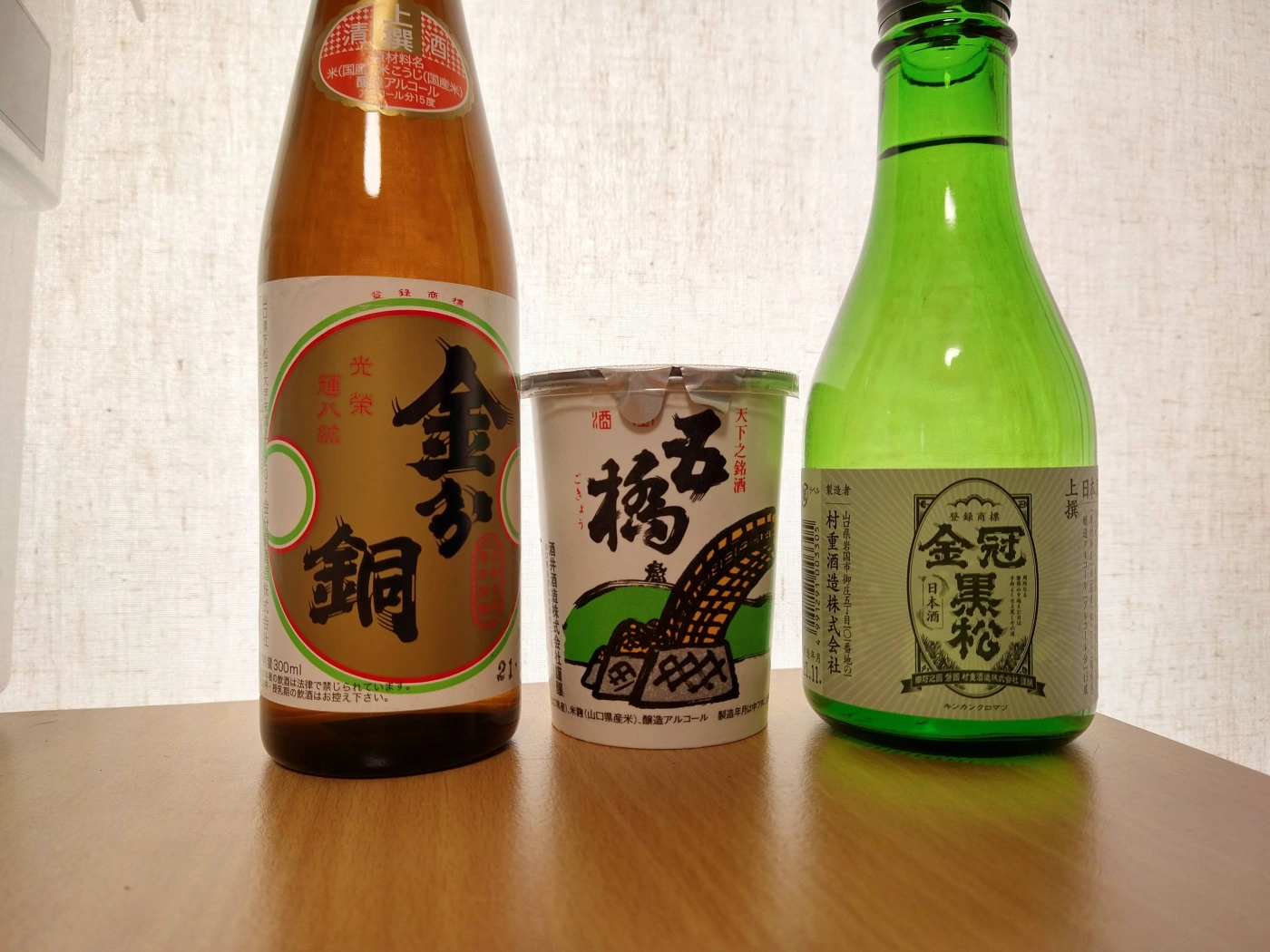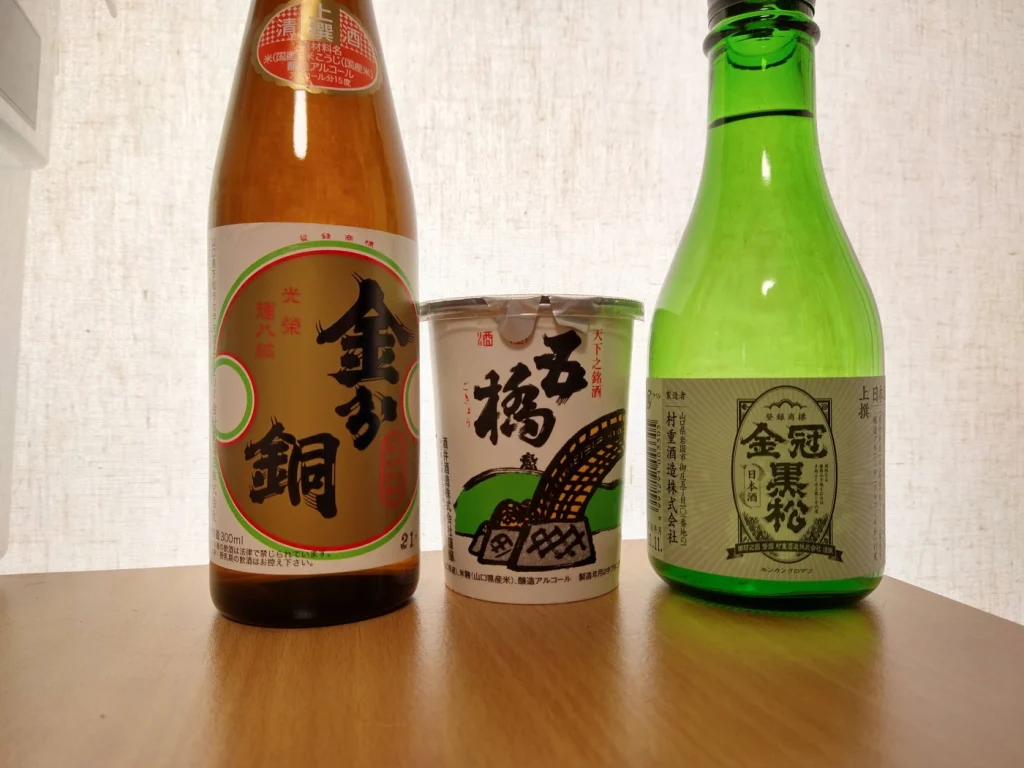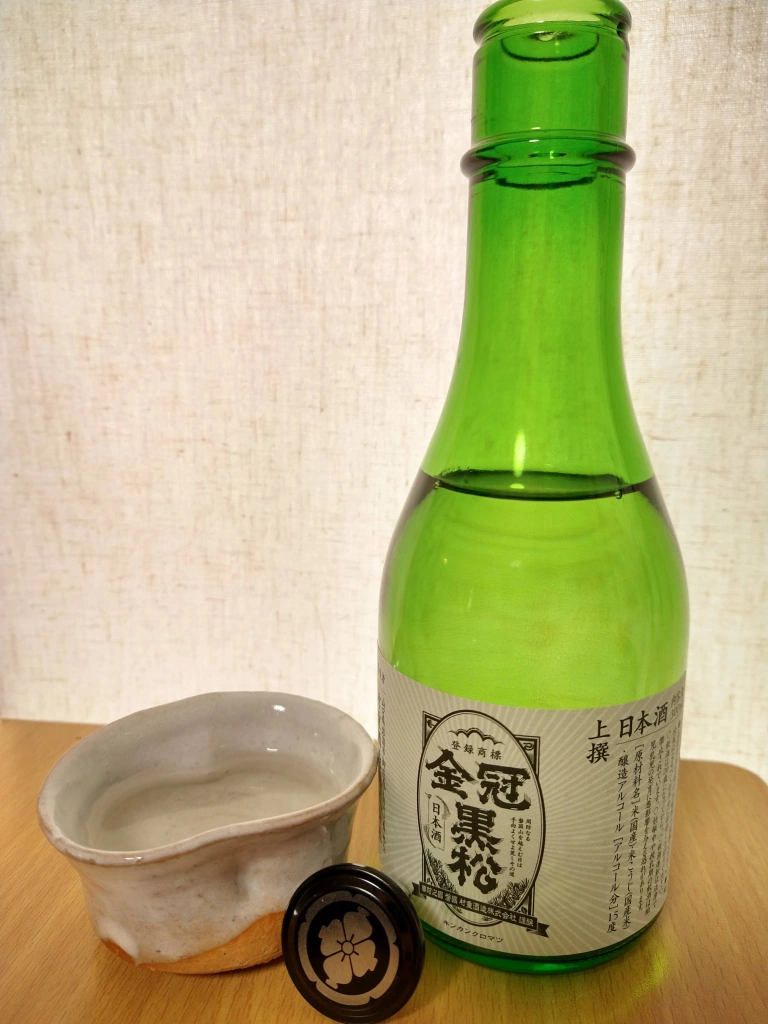
Sake review: Futsuushu in Eastern Yamaguchi prefecture
I am a documented fan of futsushu, the humble king of Japan’s sake industry. This reasonably priced, mass-market sake might not get a lot of headlines, but it still accounts for over 60% of all the sake made and sold in Japan. Many–most–sake breweries make futsushu as their backbone product, and Yamaguchi is no different. Futsushu has an only partly deserved reputation for low quality (for more of my thoughts on that, read here), but there is a lot of good stuff to be had in the class. And, to see just how much there is, I’ve decided to go through all of the best futsushu made in Yamaguchi to see what it has to offer.
When I say best, there are three conditions I’m setting: no nizoshu (meaning ingredients are only rice, koji, and brewer’s alcohol). No OEM (meaning the sake is made and sold by the same company). Small formats (I want accessibility, so one-cups or 300ml bottles only).
My first installment brings me to Eastern Yamaguchi, with entries from Iwakuni’s Sakai Shuzo and Murashige Shuzo, and Kudamatsu’s Kinfundo Shuzo.

I started with, well, my favorite. Gokyo Josen has been a go-to for me for a couple of years (read here for a full review). I think it represents the ideal of what futsushu can be. It is a clean, well-made sake perfect for meals. It offers a rich range of flavor and deep sweetness, but does not linger or weigh on the palate. It is clean, in other words, and easy drinking, and that has made it a favorite of Yamaguchi drinkers for years. Like most futsushu, it is not particularly aromatic, nor would the word “elegant” cross my mind. But it is imminently satisfying, which is what futsushu is all about.
The paper cup format is, frankly, perfect. It’s light, easily disposable, and found all over the place in Yamaguchi, at convenience and grocery stores alike, for around 190 yen for 180ml. Futsushu shines at warmer temperatures, so it’s at prime drinking temperature right off the shelf. This really is my benchmark drink.

The next entry is another Yamaguchi stalwart, Kinkan Kuromatsu. While this one is not as universal as Gokyo, but it is another one that you can find nearly everywhere around eastern Yamaguchi. Once again, this is a stellar meal sake, but it comes in a bit lighter than Gokyo does. The finish is very quick, although it does offer satisfying richness. I’d say that it has less amino acid content than most of the western Japan futsushu I drink, but it’s still not aromatic or delicate.
Again, this sake is imminently drinkable and great for mealtimes, especially heated up. I still prefer Gokyo, but this is certainly a quality futsushu.

This is a hyper-local brew. It is mostly only found in Kudamatsu and Shunan, but within that small area it’s a relatively popular supermarket sake. This one actually hits heavier than Gokyo, with a bit longer tail on the aftertaste, but without excess sweetness. It almost needs heating to really come into its own, but it’s delicious when you dial in the temperature. It comes across as almost aggressive during meals, so it can overpower less rich dishes, but when it comes to satisfaction, it’s got plenty.
In this set, Gokyo is still top, but I would not hesitate to pick up any of the three when out shopping.
I plan to continue this venture with a central Yamaguchi exploration soon. Stay tuned!
Original content by Jim Rion: https://yamaguchisake.com/2022/03/16/on-the-futsushu-trail-eastern-yamaguchi/#more-2187




